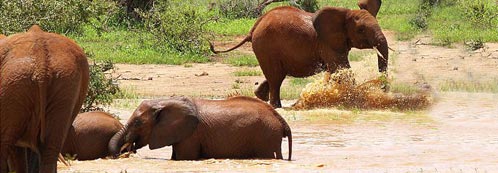Field Notes
January - April 2022
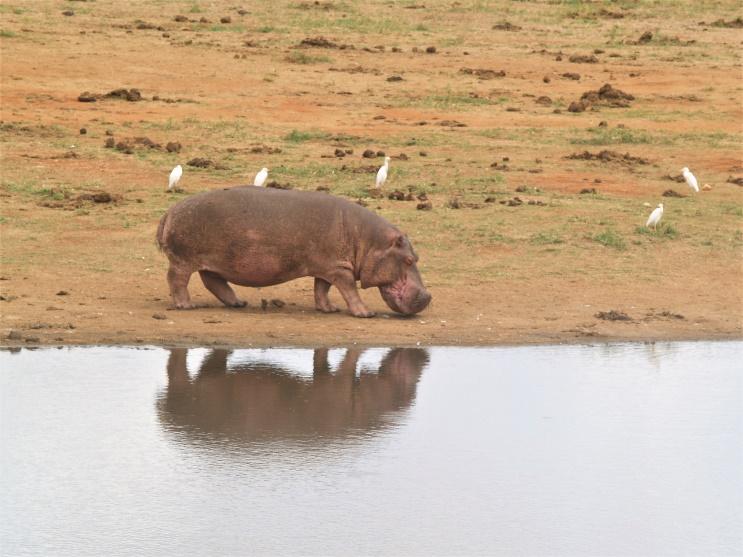
It was hot and humid with several storms between January and April. Most of the vegetation in the bull area was green and waterholes had drinking water. After a storm in February hundreds of white butterflies were in the bull area.
Giraffe aggregated in the southern bull area. One groups of 19 individuals were following a group of 22 bulls east through a valley.
Carmine Bee-eaters, Eurasian Rollers, Barn Swallows and Harriers were in the bull area between January and March. At one waterhole, I found three young Great White Pelicans. Pelicans are sighted in Tsavo East but these sightings are rare.
Bulls
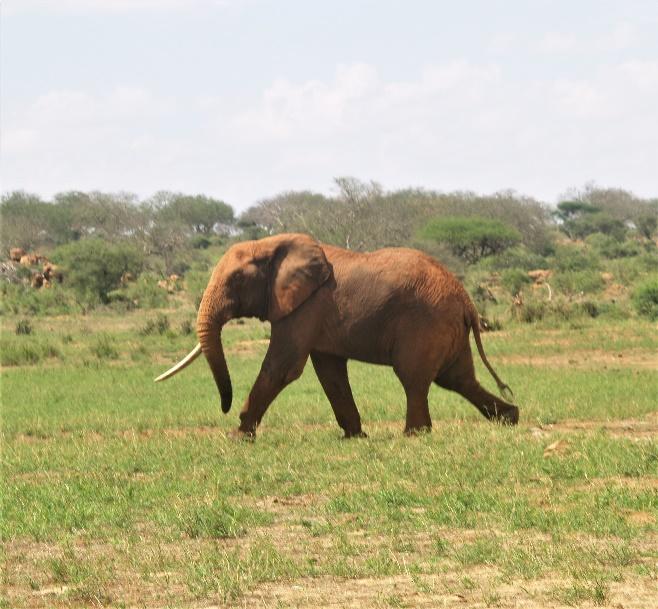
Bull groups were dispersed in the southern region of the bull area between January and March. Then in April many moved to Voi River west area: Swift, Third, Crux, Sunray, Oort and Wishbone, where many families aggregated.
In January, Oort was with four other bulls feeding in the bull area. He pulled down a large Delonix branch and a younger bull moved toward him. Typically, bulls share a branch, but this time Oort dragged the branch away from the younger bull into the thick bush.
Sword (photo right) was first photographed and named in 2011 with two bulls along Voi Riverine central. Most often he is with bulls or families and rarely alone. His range is typically in the eastern area but in March he was in the southwest with four bulls.
Families
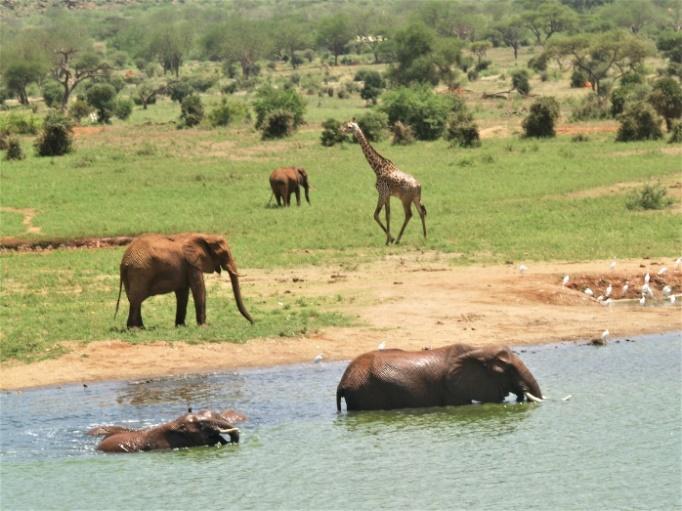
Families were in the southern bull area in large aggregation between January and March, before moving to the Voi Riverine area in April: Batik, Nola, Nutmeg, Savanna and Summer. Most of the aggregation had one or two large bulls (40 years old) with them.
Lavender and her offspring Lila (tail stub) were first photographed and named in 2019. They spend most of their time along Voi Riverine. In April, I found them swimming in a waterhole in their western range (photo left).
Many new females and their offspring were photographed in March and April. Several had a broken ear, twisted tail and some with very short tusks. I’ve never seen these females and with these distinct features suggests they are new to the area.
May - August 2022
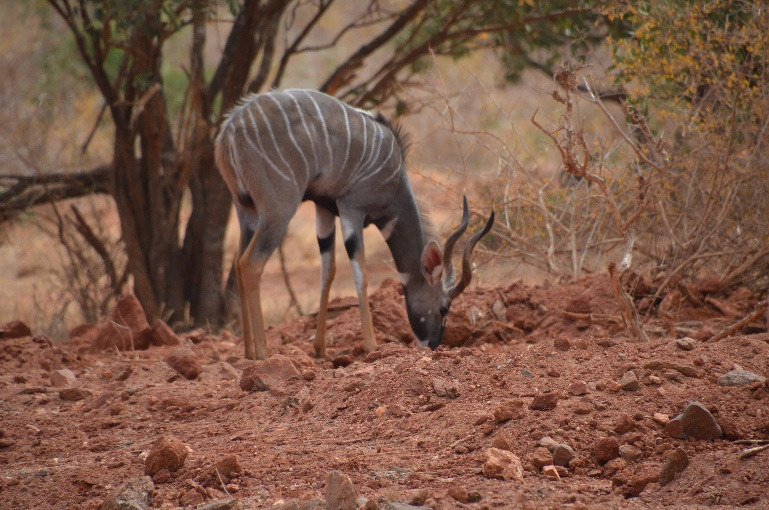
It was hot and humid in early May. Between late May and August, the temperature dropped considerably. Although there were a few storms between June and August the winds were strong and the vegetation dried quickly. I often see Impala, Gazelle and Dik-dik dig-up tubers in the dry season. In July a Lesser Kudu (photo left) used his hoof to dig into the ground then used his teeth to bite off pieces. Tubers are not only a food source but provide fluid as well; a resource during the dry season. In late May, five Hirola were feeding in a grassland area near Voi Riverine. In July a group of Desert Warthogs were drinking from a water pipeline leak pool. And, in August a pack of eight Wild Dogs were in the Hills bull area traveling west.
Bulls
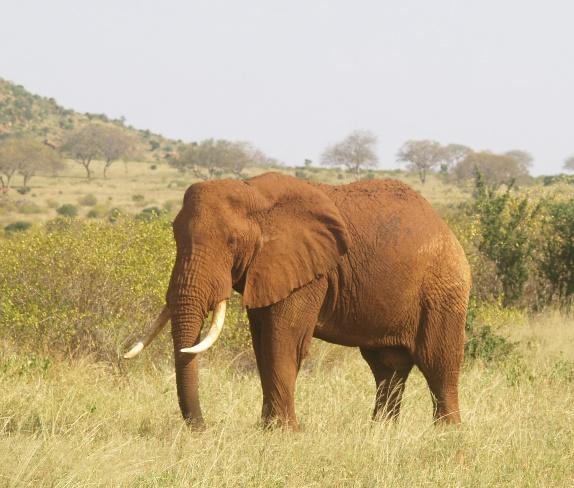
Many bulls alone and in bull groups moved out of the Hills bull area in May spending time along Voi Riverine. Although the river had no surface water, elephants often dig deep into the water table for water; providing a water source for other wildlife. Oort (photo right) was first photographed and named in 2016 in the Hills bull area with four other bulls. He is rarely seen alone and spends most of his time in the bull area. This year he moved West to Voi Riverine and joined several families when he arrived at a waterhole to drink and swim. He is often with Quark, a bull ten years younger than he is.
When I found Crux in the Hills bull area in late May, all the hair from his tail was gone. Last sighting was the month before in April, with short-blunt hairs.
Families
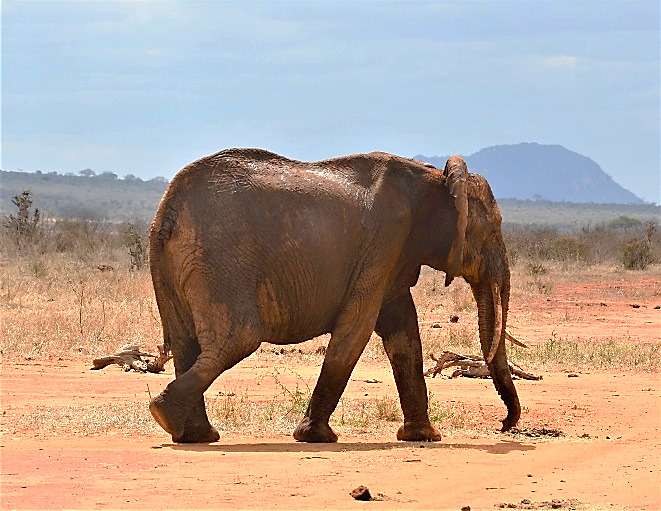
Between May and August families were dispersed in the Hills area and along Voi Riverine. When the temperature dropped in July many adult females kept their ears back against their shoulders and rarely flapped. This may be due to maintaining body heat.
Similar to bull movements, many families moved between the Hills and Voi Riverine between July and August: Savanna-Summer, Batik-Azalea-Osiris and Chestnut-Maple-Parsley.
Nutmeg (photo left) was first photographed and named ten years ago in 2012. At that time her right tusk was very short and splayed out. Ten years later her tusk has grown considerably; curved down and under her trunk. She is one of the many females and their calves that climb up and over the top of hills
September - December 2022
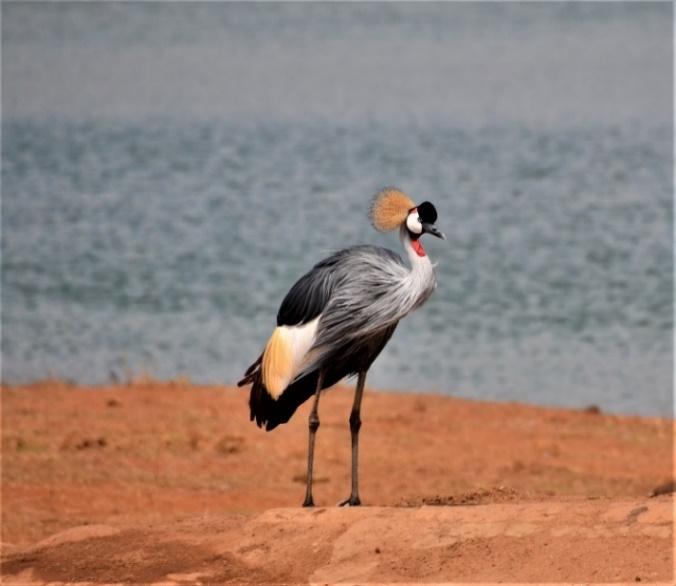
September and October were dry months. The temperature started to rise in mid-October, a good sign the rains might arrive soon. In mid-September many Giraffes were dispersed along Voi Riverine, and several groups had a newborn present. The rains started in mid-November. When the rains finally arrived, within 48 hours the grass was green and shrubs and trees produced new shoots. Beetles emerged from the wet soil and within a week the southern region of the bull area was inundated with butterflies. Fewer migratory birds were in the bull area compared to previous years: Eurasian Rollers, Harriers and a Steppe Eagle. Although the rains started in November, it was a short rainy season. By late December Commiphora leaves turned yellow and fell.
Bulls
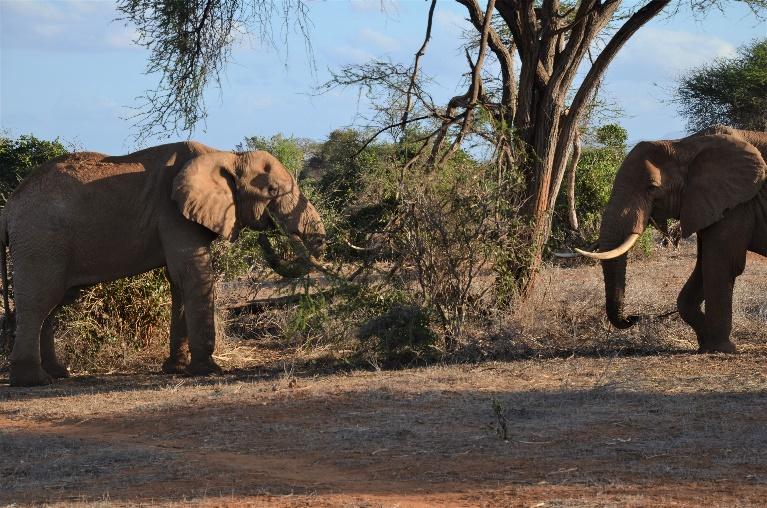
During the dry months of September and October bulls were feeding on Acacia branches. When the rains started, they switched to grass. Breeze and Swift newly independent bulls spent time alone or with other young bulls. On occasion they joined a family for a few hours then ventured off on their own. Sad news: Odyssey died in mid-November in Tsavo West. I first photographed and named him eighteen years ago (2004) in the bull area of Irima Hill. He ranged from Aruba to Kanderi to Voi Riverine West often when he was in musth, to Manyani. He often crossed the old train tracks at Manyani gate headed to Tsavo West. When the new elevated train was built, he used the tunnel to go back and forth between Tsavo East and West National Park. He was 60-65 years old.
Families
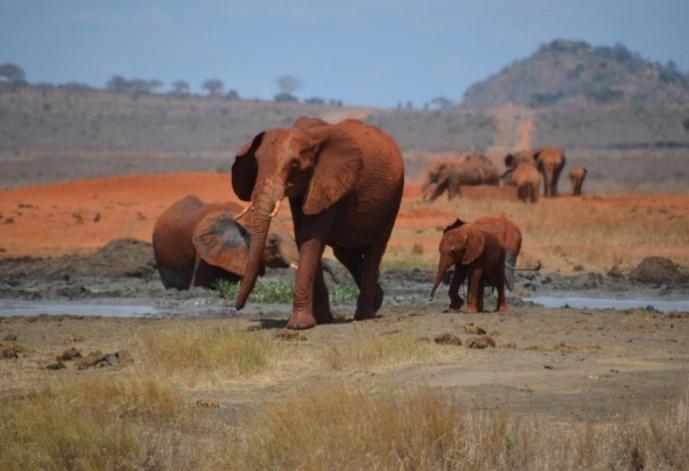
The water pipeline leak pools in the Hills region were a popular area for many families during this long dry season. Families aggregated to drink, splash and socialize. A new female with a broken right ear (photo-left) was at one of the pools. She is now one of 24 known females with a broken ear. Several known families moved from the Hills area to Voi Riverine. Batik and her two offspring moved north-east to Kanderi, feeding on Acacia branches in late-October.
Many new females with distinct features moved to the western region of Voi Riverine and Hills area. Past records of births indicate that in some years October is a birthing month. This year in October, many known and unknown females had a newborn present including Mango.
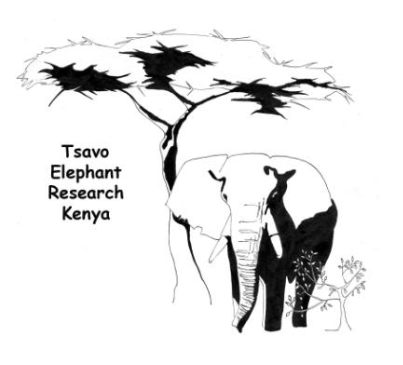
Tsavo Elephant Research Needs Your Help.
Donations are needed to continue this 30+ year field study
and support a Kenyan research field team.
We monitor the behaviors of Tsavo known bulls and families:
group dynamics, offspring & survival, musth cycles and habitat use.
Please click here or on the donate button
to send your donation.
Thank you!
Barbara
